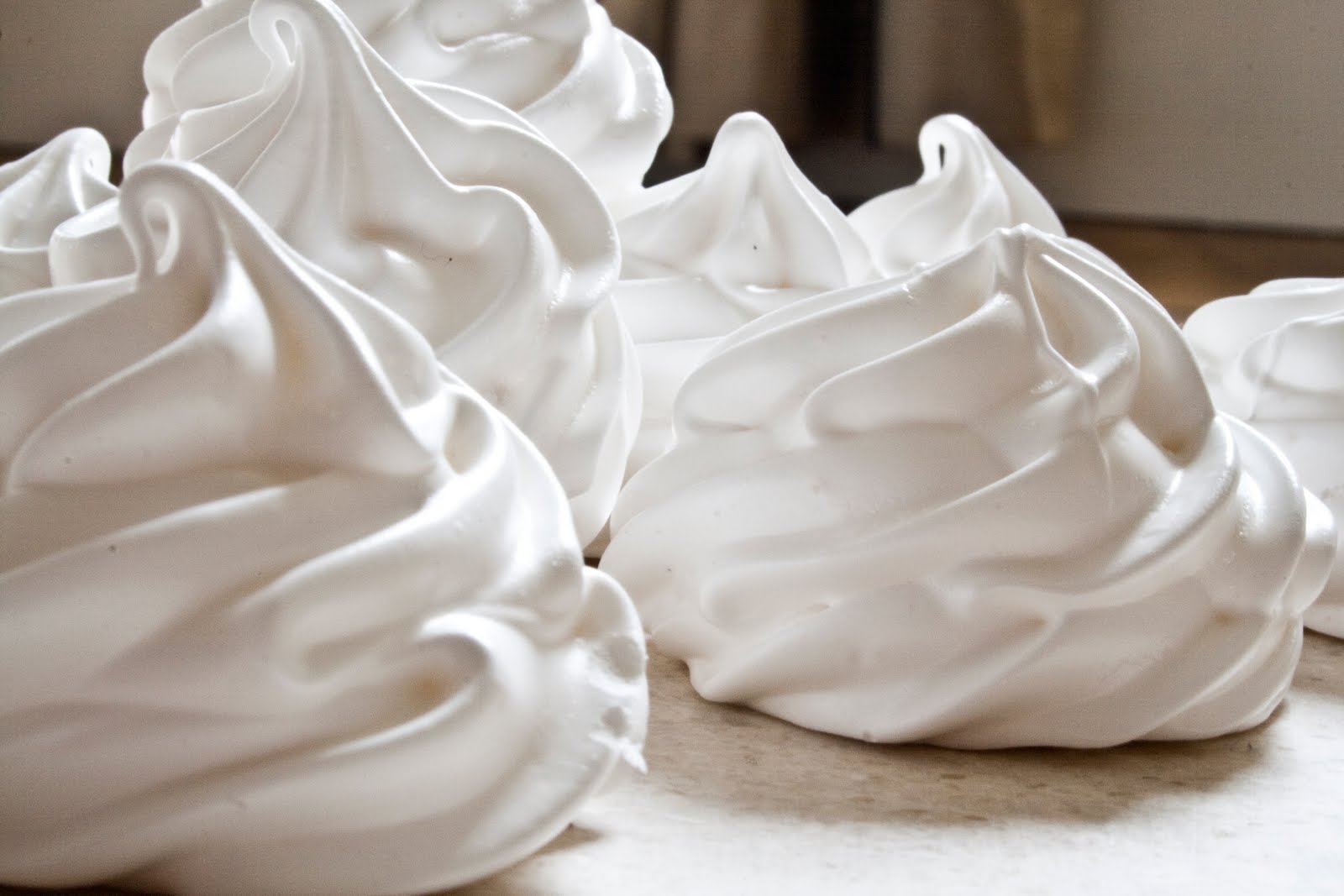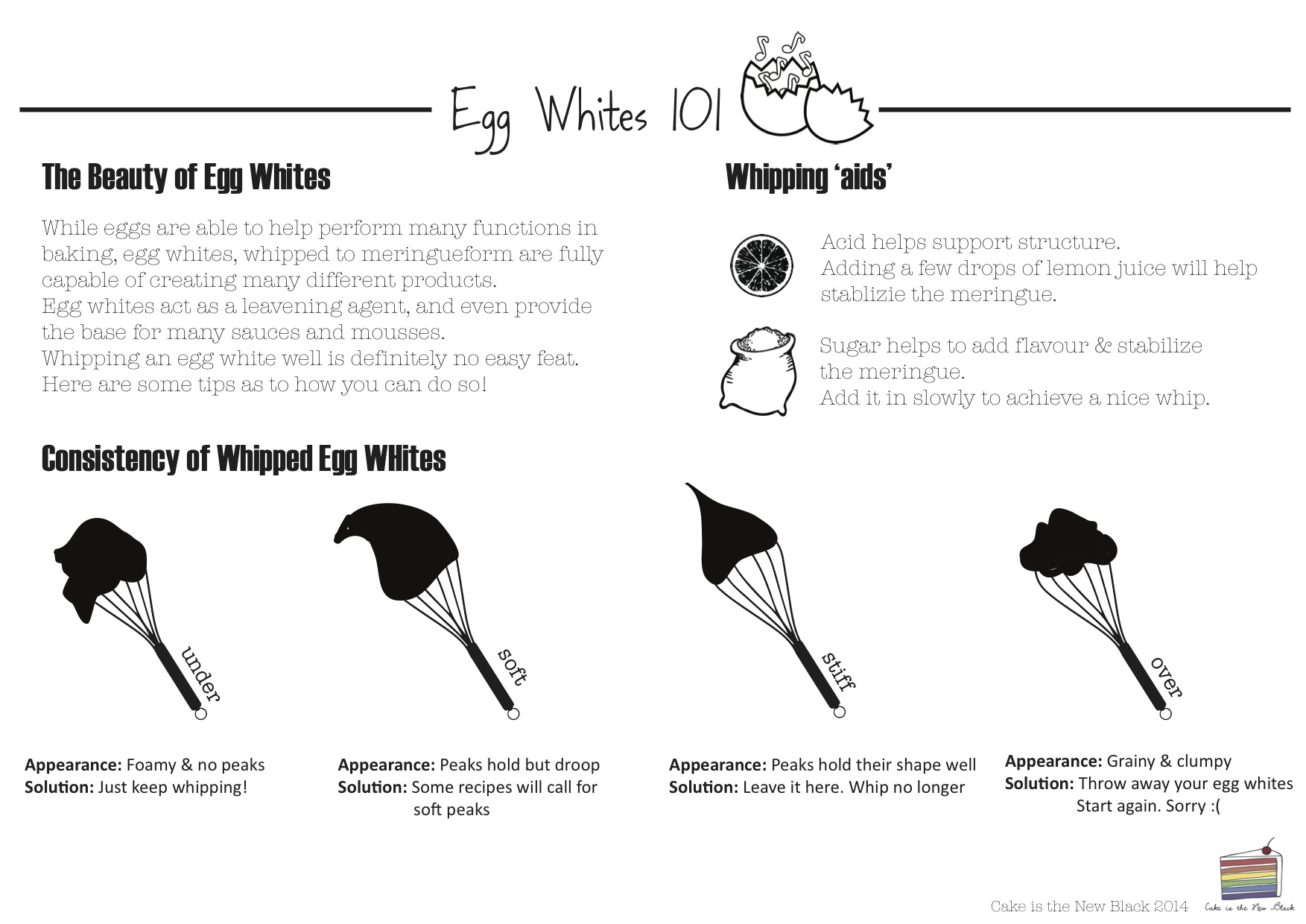Hi everyone!
As you all know, I’m currently overseas on my 6-month exchange programme in Bangkok. I’ll do my travel updates at Midi & Me and will upload pictures over at Travel, Snap, Smile.
Since I’m unable to bake here (no oven boooo), I decided that I’ll do some technique posts here and there, to the best of my ability.
Today’s one is on one of our most dreaded things – Egg Whites.
Egg whites are commonly used in making meringues, macarons, marshmallows and all sorts of other scrumptious desserts. A big problem, however, is that getting these egg whites whipped up to the right consistency can be quite a bit of a hassle.
Download PDF: Egg Whites
What do I use to whip my egg whites?
You can choose to whip your egg whites by hand or by machine. If you go with the former, then your understanding of how the egg whites work when being whipped will be better. That way, you’ll be more likely to get your egg whites to your desired consistency. If you go with the latter, then you will definitely have your egg whites whipped up faster. However, it is crucial that you understand the nature of your egg whites before you go about doing this.
What kind of bowl should I use?
I have read on many blogs that using a copper bowl will yield spectacular results for your egg whites. Because I do not own one, I am in no position to comment. However, I do know that using a clean bowl is highly important. If your bowl or whisk is slightly contaminated (or if you accidentally crack some yolk into your mixture), then your whites may not whip up well or even whip up at all!
Must I whip continuously?
Think of whipping your egg whites up as a science. If you stop the chemical reaction between two parts halfway, it may be impossible to continue that process should you start again. Stopping will cause the whites to disintegrate and give you an unfavourable messy clump of foamy grainy whites.
What purpose does a meringue serve in my cakes/mousses/sauce?
Since meringue is light and fluffy, an incorporation of meringue is usually so that the product will have a lighter feel to it. For instance, chiffon and sponge cakes separate the whites from the yolk, with the whites being whipped up before incorporating it to the mixture. At this point in time, it will be important to consider the method in which you fold your egg whites. You do not want to compress it down too much (by folding too vigorously), or the purpose of the original meringue would be defeated.
Well, that’s all I got for you today!
Hopefully this little technique post helped you out a bit in understanding egg whites. I know I wasn’t able to cover that much but do post a little comment if you have any other queries!
Love,
Eugenia




Isn’t it tiring to whip by hand 🙁 *muscles cramping up*
It is 🙁 But it’s really fun after awhile heehee.